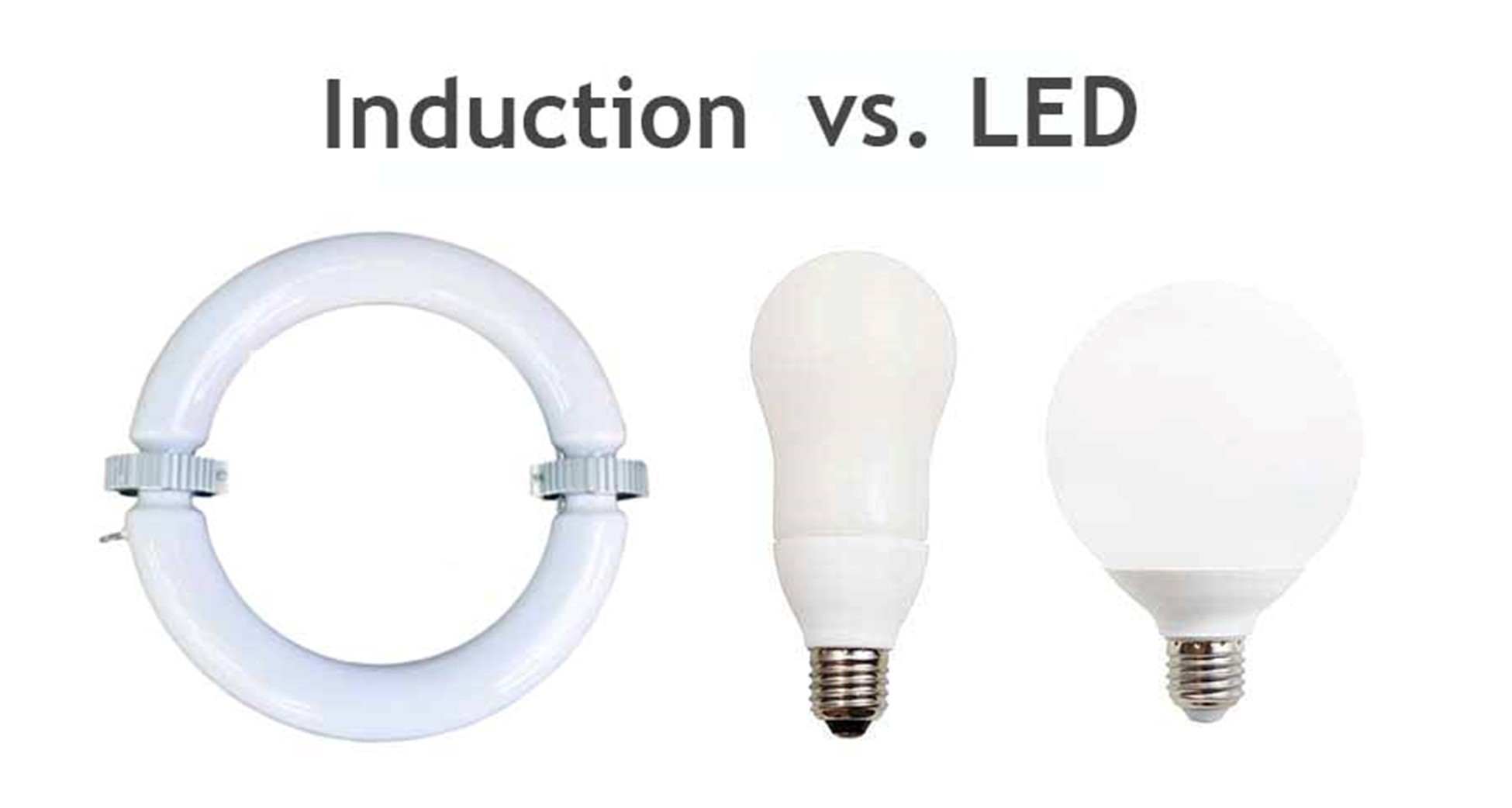Understanding the Concepts of Induction Lighting vs LED
Before we get into comparing the metrics of the two light sources, it is important to understand the construction concept behind induction vs LED lighting.
Induction Lighting
Induction lighting works in a similar way as fluorescent lamps do. Both create light through the use of an electromagnetic pulse that excites a mixture of inert gas and mercury particles. However, where a fluorescent lamp utilizes metal prongs, induction lamps use an externally located electromagnet. This makes the induction lamp much hardier than their fluorescent counterparts; it also helps to eliminate the possibility of leaking gases, which can disrupt the balance of inert gas within the glass enclosure.
Light-Emitting Diode Lights
Light-emitting diode (LED) lamps are solid-state lights, which means that they do not use any type of gas to create illumination. (They also do not use filaments, like incandescent lamps.) Using a semiconductor, an electric charge passes through holes in the negative portion into a positive portion. When this happens, light is created and the LED illuminates.
Comparing Induction vs LED Lighting
Now that you understand the differences in lighting technology, it is time to compare induction lighting vs LED. Below, we take a closer look at the brightness and performance, as well as the cost, energy and maintenance of induction vs LED lighting.
Brightness & Performance Comparison
When it comes to brightness, most experts recommend you take a look at the lumens, not the watts. Lumens are a more honest approach to determining the brightness of your lamps and, as such, have become the standard metric used to judge a light source. LEDs, however, can have up to 120 lumens per watt – and they continue to improve as each year passes. This means that LEDs can burn brighter and illuminate more.
While in this blog we are focusing on the difference between induction vs. LED lighting, you may want to read more about lumens. Don’t worry, we have got you covered in: Understanding Luminous Efficacy.
High-intensity discharge (HID) lights are known for their lengthy warmup times, ranging from 10 to 20 minutes, prior to full illumination. Unlike HID lamps, which are popular for illuminating large spaces and parking lots, neither induction nor LED lighting require a warmup period. However, induction lighting may require a short warmup period at extremely low temperatures. LEDs, by comparison, are unaffected by temperature in this respect. That being said, neither induction nor LEDs flicker while in use. Induction lighting also has an average of 80 on the Color Rendering Index (CRI) scale. This means that induction lighting has a mid-range quality when it comes to color rendering. LEDs, on the other hand, typically have CRI ratings between 70 and 90. That means full and proper color rending is more possible through the use of LEDs.
Energy Comparison
When it comes to induction vs. LED energy savings, LEDs have an advantage. Lumens also speak to the efficiency of your lamps as well. Above we stated that induction lighting typically operates at up to 90 lumens per watt. The LED is currently at 120 lumens per watt. This means LEDs tend to provide brighter lights using fewer watts. Or, in short, LED lamps require less energy to burn brighter than their induction counterparts. Furthermore, many locations are now looking to include lighting control features in their operations in order to reduce energy consumption costs. Some of these control features include the ability to dim lights to reduce energy consumption when daylight is available. In this case, induction lighting does not allow for dimming of any type. LEDs, however, do.
If you are interested in maximizing your energy savings, the addition of a lighting control system to any LED retrofit, adds to your savings. You can learn more by checking out our Lighting Control System Series.
Maintenance Comparison
Shattered lamps are one of the most common reasons for replacing lights. Both induction and LED lighting are considered durable. Because they do not include electrodes or filaments, both are less likely to be damaged by shock or vibrations. Lighting depreciation is another reason lamps are commonly replaced. Lights fade over time, which some may or may not notice prior to them burning out or becoming otherwise damaged. But when you depend on full illumination, depreciation can play a major role in how often your lamps must be replaced. After 60,000 hours, induction lamps will depreciate about 35% to 40% of their initial advertised lumens. LEDs, on the other hand, take much longer. At 100,000 hours, an LED may depreciate 30%. This means they last much longer than their induction counterparts and, subsequently, need to be replaced less often based on depreciation.
Cost Comparison
Both induction and LED lamps have moderate upfront costs when it comes to installing fixtures and purchasing lamps. However, when it comes to the overall induction vs LED cost, LEDs again have the advantage. Given that both induction and LED lamps are durable and reliable sources of light, how is this so? The energy efficiency and reduced maintenance costs of the LED mean that it costs less overall to use. Since every penny adds up when it comes to lighting any business, warehouse, or outdoor space – finding the lamp that reduces costs across the board is vital to cutting overall energy consumption. (In fact, those pennies add up rapidly when lighting accounts for 30% to 40% of a building entire energy consumption costs!)
LED Lighting with Action Services Group
When it comes to induction lighting vs LED – it becomes obvious that LED lighting are superior and cost-beneficial. If you are looking to conserve money on installation and energy consumption, contact Action Services Group today to find out how we can help you save! Call us at 610-558-9773, email [email protected] or schedule a call.








































0 Comments